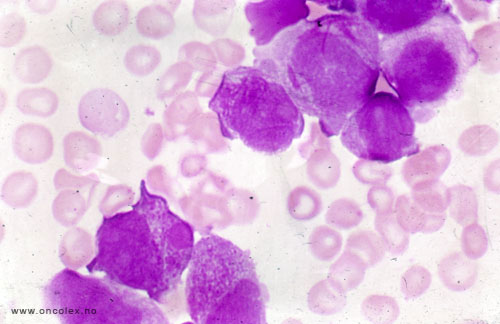By: Prof. Dr. Seyed Saeid Zamanieh Shahri, MD and Prof. Dr. Sonia Sayyedalhosseini, MD
Bone marrow cancer:
۷) Weight loss: A person with multiple myeloma can experience rapid weight loss. This disease can cause many symptoms such as excessive fatigue and severe pain, which suppress appetite. Multiple myeloma can make it difficult to exercise and burn calories that help boost metabolism and increase appetite. In short, if a person continues to lose weight without making any changes to their diet or physical activity, they may be dealing with a significant underlying health problem behind the scenes.
۸) Mental confusion: Confusion can result from the many symptoms associated with multiple myeloma, including hypercalcemia and kidney damage. Basically, the body can send confusing signals to the brain when dealing with bone marrow loss. Because of this, mental confusion is rarely seen in the early stages of multiple myeloma, when the body is still generally healthy.
۹) Frequent diseases: Multiple myeloma attacks the bone marrow and causes bone loss. This condition not only causes serious problems for the patient due to bone weakening, but also reduces the number of healthy cells that have the ability to fight infections. At this time, multiple myeloma can weaken the patient’s immune system and make him more susceptible to infection. In fact, these conditions can make the patient feel like they are constantly fighting diseases. Also, multiple myeloma makes it more difficult to overcome the disease and recover, especially for people whose respiratory tract and lungs are affected by the infection.
Types of bone marrow cancer:
Bone marrow cancer is classified based on the type of cells affected.
۱٫ Multiple myeloma: Multiple myeloma is a type of cancer that occurs in plasma cells. Plasma cells are made in the bone marrow.
۲٫ Leukemia: Leukemias are cancers of White Blood Cells. Sometimes these types of cancers can start in all types of blood cells. Acute leukemias are fast-growing cancers and chronic leukemias are slow-growing cancers. There are several different types of leukemia: Acute lymphoblastic leukemia (ALL): This type of leukemia is more common in children than in adults.
Acute myeloid leukemia (AML): This type of leukemia is more common in adults, but it can also develop in children.
Chronic lymphocytic leukemia (CLL): This type of leukemia is seen in lymphocytes (a type of White Blood Cell) and is more common in adults.
Chronic bone marrow leukemia (CML): This type of leukemia is rare. It starts in the bone marrow and spreads to the blood and other body tissues.
Chronic myelomonocytic leukemia (CML): This type of leukemia is found in the type of bone marrow cells that make other blood cells. It mainly affects adults.
Pediatric leukemia: Pediatric leukemia is the most common type of cancer that affects children and adolescents. Most cases of childhood leukemia are ILL or AML.
۳٫ Lymphomas: Lymphomas are cancer cells in the lymphatic system. These types of cancers can occur in many parts of the body, including the bone marrow. There are two main types of lymphoma.
Non-Hodgkin lymphoma: A type of lymphoma that affects lymphocytes. These cancers can develop anywhere in the body and affect many different types of lymphocytes.
Hodgkin’s lymphoma: Hodgkin’s lymphoma is also a type of cancer that affects lymphocytes. The main difference between Hodgkin’s and non-Hodgkin’s lymphoma is the presence of a special type of abnormal cell called a Reed-Stenberg cell.
Symptoms of multiple myeloma are: Bone pain or Fractures; Fatigue; Increased Infection; Change in the frequency of Urination; Dizzy; Thirst; Nausea or Vomiting; Weight Loss
The symptoms of leukemia are: Weakness; Fatigue; Shortness of breath; Fever; Skeletal pain; Weight Loss; Night Sweats; Enlarged Lymph Nodes or Spleen; Frequent Infections; Pale Face; Frequent and Unexplained Bruising; Prolonged Bleeding from small wounds; Body Pain.
Symptoms of lymphoma are similar to those of leukemia, but may also include:
Chronic Cough; Skin Itching; Night Sweat; Fatigue; Fever; Lymph Node Pain after consuming alcohol; Enlarged Lymph Nodes; Loss of Appetite; Abdominal Pain; Pimples or Skin glands; Feeling full or bloated from an enlarged spleen.
If someone has these symptoms, they should see a doctor immediately.
Diagnosis:
Tests performed to diagnose bone marrow cancer include:
Blood and urine tests: A blood or urine test can detect a specific protein associated with multiple myeloma. Blood tests can also assess kidney function, electrolyte levels, or other cellular levels.
Bone marrow aspiration: Doctors use a special needle to puncture one of the bones and remove a small sample of bone marrow. A specialist examines this sample under a microscope and looks for abnormal or cancerous cells. This test is performed under anesthesia to minimize discomfort or pain.
Imaging tests: X-rays, Computed Tomography scans (CT), Magnetic Resonance Imaging (MRI), and Positron Emission Tomography (PET) scans can be used to find abnormal or damaged bones. These tests are used intermittently during the course of treatment to monitor how the treatment is progressing or how the disease is progressing.















